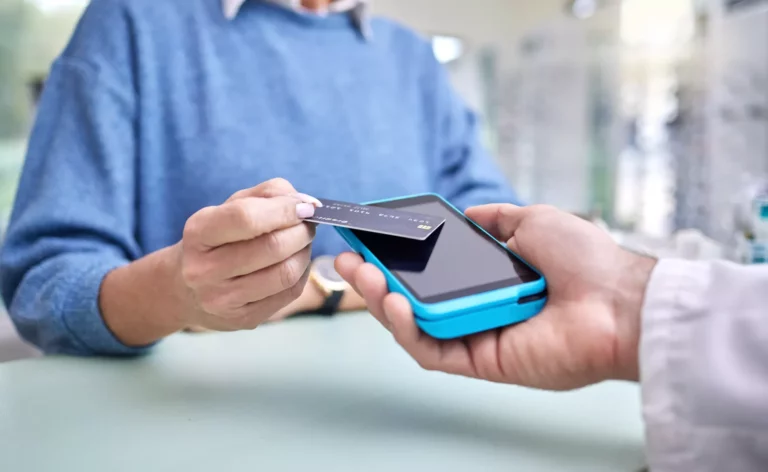Limited access to healthcare is a pressing global issue—this is no exception across the United States.
Individuals in remote or economically disadvantaged areas face substantial barriers when seeking healthcare, leading to inadequate care and poorer health outcomes for these populations.
These “medical deserts” exacerbate existing health disparities and perpetuate a cycle of marginalization.
However, there is a glimmer of hope on the horizon.
While challenges persist, technological advancements like mobile patient payments, telemedicine, and wearable devices promise a more equitable healthcare landscape for all.
What Are Medical Deserts?
“Medical desert” is a term used to describe areas, in both urban and rural regions, where residents face significant challenges in accessing essential medical services and healthcare facilities.
These areas are characterized by a scarcity or absence of healthcare institutions/stakeholders, including doctors, nurses, hospitals, clinics, and pharmacies.
When we talk about access, there are 5 distinct areas to consider:
- Availability: are there enough healthcare providers?
- Accessibility: can people reach healthcare facilities?
- Accommodation: how quickly can a patient be seen?
- Affordability: are costs disproportionately high?
- Acceptability: what other socio-cultural barriers are present?
As a result, residents in medical deserts often experience limited or no access to timely, quality healthcare. This ultimately leads to poorer health outcomes and more health disparities.
Why Do Medical Deserts Exist?
Medical deserts can occur for various reasons, a few of which include the following.
Geographic Isolation
While not confined to rural areas, most medical deserts are in geographically isolated rural communities. It is difficult to establish and maintain healthcare facilities in these areas due to a lack of adequate infrastructure, including transportation.
Sparsely populated states like South Dakota, Montana, Nebraska, and Kansas have the highest number of counties living in pharmacy and healthcare deserts: 40% and 9% respectively.
Economic Factors
In economically disadvantaged populations, medical deserts can be attributed to financial hardships, including high poverty rates. Unfavorable economic conditions may deter healthcare providers from establishing practices due to lower revenue and high operating costs.
Shortage of Healthcare Professionals
A severe labor shortage has plagued the healthcare industry since COVID-19. The shortage is more prevalent in medical deserts due to less lucrative opportunities, a perceived lack of professional growth, or simply the desire to work in larger cities boasting newer facilities.
Education and Awareness
Language barriers or isolation may mean residents are simply unaware of the importance of preventive healthcare. This contributes to low patient volume for healthcare services, a factor the Government Accountability Office identified (as far back as 1990) as associated with a higher risk of hospital closure.
Limited Technological Access
As much as telemedicine or online appointments are helping to eradicate poor access to healthcare, some medical deserts lack modern technology or even a stable internet connection, which makes it hard (but not impossible) to expand access.
Impact on Communities
Medical deserts have profound negative consequences with respect to physical and financial health.
Rural communities are particularly vulnerable to medical deserts due to their geographic isolation and limited population density. These residents face longer travel times (problematic in emergencies or trauma situations), and rural healthcare facilities may lack specialized services.
The scarcity of physicians means that residents often have to travel long distances to receive basic medical care, resulting in delayed diagnosis or treatment. Fewer than 10% of all physicians in the U.S. offer their services in rural areas, despite the fact that 20% of the American population lives in them.
City residents are also affected by medical deserts: not because of distance, but due to financial challenges.
High out-of-pocket and unpredictable costs make it difficult for patients to follow the treatments or medication that they need. Though this trend has declined in recent years, there is still much work to be done, especially when it comes to financing and patient payment solutions.
Medical deserts disproportionately affect marginalized communities, including racial and ethnic minorities. These communities already face systemic healthcare inequalities, and additional barriers can result in these marginalized populations experiencing higher rates of preventable illness and mortality.
COVID-19 put a spotlight on the consequences of medical deserts. As facilities became overwhelmed with cases, residents in these areas had even greater challenges accessing testing and treatment.
How Technology Is Improving Healthcare Access
Technology is a powerful tool that providers can utilize to address the issue of medical deserts.
By leveraging innovative solutions they better manage lifestyle diseases, promote early detection, provide patient education, and streamline accessible healthcare.
With the right technology, medical deserts can become significantly lessened, transforming the healthcare landscape in our post-pandemic world.
Below are just some of the ways in which technology can pave the way towards more equitable healthcare.
Telemedicine
Enabling patients to visit with a physician remotely means that they can receive care and guidance from any location, no matter how remote.
Whether meeting with a specialist or attending a routine follow-up after a procedure or surgery, digital health visits allow patients to get care in their homes, and on a schedule that works for them, as opposed to traveling long distances and taking time off work.
This also frees up time for physicians (as there is less back and forth) and allows them to dedicate more time to each individual patient.
Electronic Health Records (EHRs)
EHRs are centralized data repositories that consolidate patients’ medical histories.
This data can be easily accessed by authorized healthcare providers in different locations. This means that patients can transfer from one provider or specialist to another, and all their information will be available.
EHRs ensure all patient care team members have access to the most up-to-date patient data, enabling real-time sharing.
As an added bonus, EHRs can seamlessly integrate with telemedicine platforms, expanding access to care and allowing healthcare organizations to identify at-risk populations by aggregating and analyzing patient data.
Payments Technology
Innovative patient payment solutions take the stress out of paying for healthcare.
Confusing patient portals and paper statements are an unnecessary barrier to healthcare access. With modern technology, paying can be a seamless experience, allowing patients to pay from their mobile devices conveniently, and in terms that work best for them.
Ease of payment matters more than you think.
In 2020, per capita income in rural areas was over $13,500 less when compared to the average American. With patients more financially burdened by healthcare than ever before, they need to understand their medical bills and have options for paying with terms that fit their needs.
Artificial Intelligence and Predictive Analytics
AI-powered algorithms are increasingly useful in healthcare settings.
When deployed in telehealth or remote patient monitoring solutions, providers can continuously monitor patient vital signs, detect anomalies, and receive alerts when intervention is required.
These same AI-powered algorithms can be used to identify patients at risk of specific medical conditions or complications, allowing providers to intervene proactively with targeted care and resources.
By analyzing a patient’s medical history and genetic predisposition to certain lifestyle diseases or conditions, these health issues can be detected earlier and treated more effectively.
AI and predictive analytics ultimately reduce the strain on emergency services and patient care, improve efficiencies, and reduce hospital admissions.
Our Goal: A Future With Equal Healthcare Access for All
At AccessOne, we believe equal access to healthcare services isn’t just a dream—it can be a reality.
We approach patient care and patient payments as one experience, where the patient must be the center of every decision. To us, “do no harm” means taking action to ensure payment is not another barrier to healthcare.
With the aim to make payments easier for all patients, we’ve designed an intuitive mobile-native pathway that makes understanding and paying medical bills effortless and affordable.
And following our mission to improve healthcare access, we have financing options for every patient, no matter their credit rating.
Payments technology bridges the gap between excellent clinical care and a seamless payment experience. Every patient should be free to receive the care they need without fear of dire financial consequences or confusing medical bills.
Take the Next Step Towards Eradicating Medical Deserts
Every provider organization can play a role in ensuring equal healthcare access for all.
Integrating data, adopting patient-centric payment technology, and prioritizing telemedicine can have a meaningful impact on healthcare outcomes and quality of life for residents in medical deserts—and ultimately make them a thing of the past.


